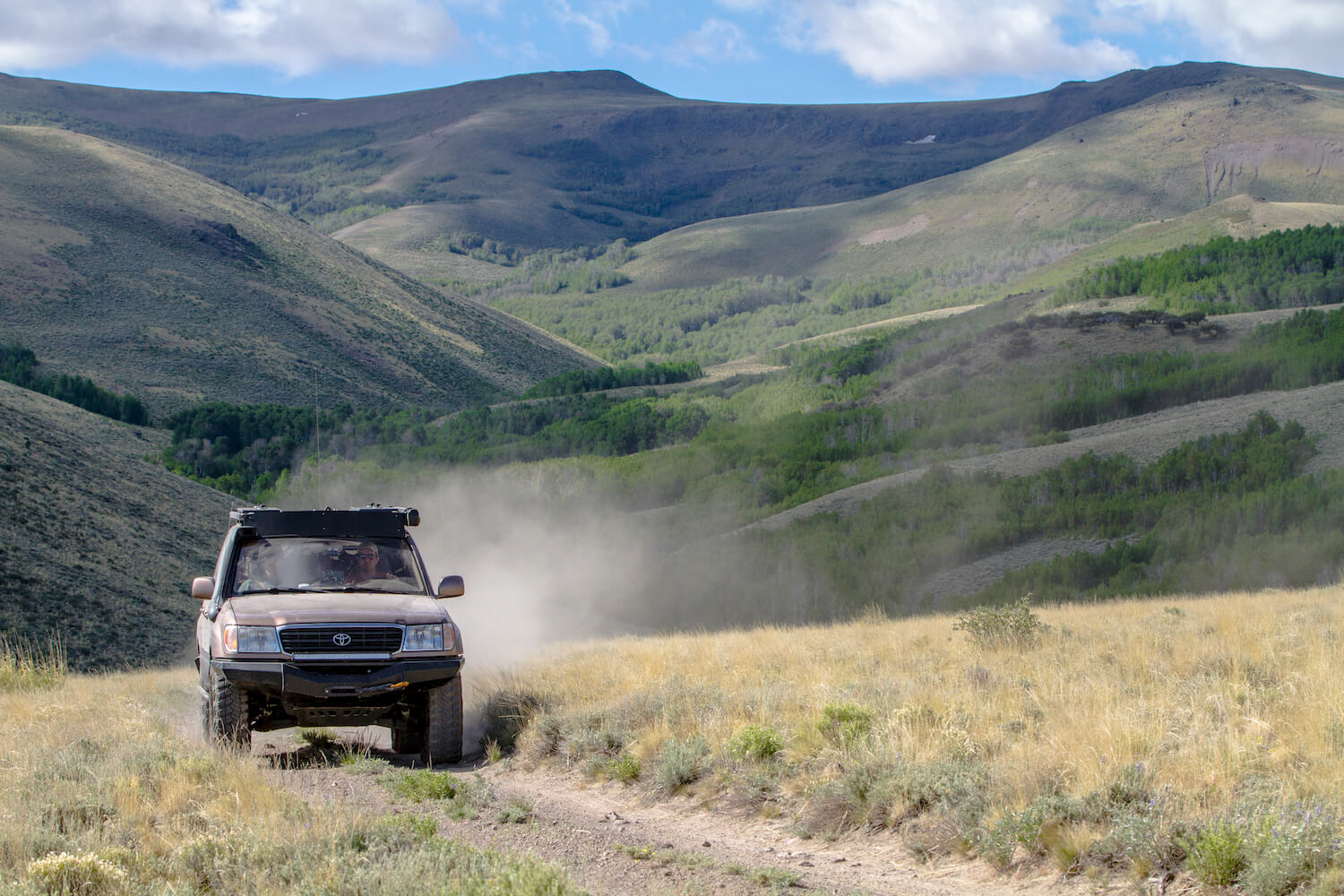
Photography by Harry Wagner
You have the 4×4, the lift kit, big tires and the roof rack. But how do you take that first step into getting out and using all of this gear? Don’t worry, keep reading for valuable tips on how to plan your first overland trip, ensure that it is a success, and parlay that into bigger, more complex trips in the future. Planning your first trip can be daunting but remember that we all had to start somewhere and rather than viewing challenges as failure, consider them learning opportunities.

When planning your first trip, don’t get too ambitious. This might prove difficult as you try to squeeze in extra locations or activities, but you want to leave yourself time to just relax and take in the view. One of the best things about overland travel is finding more things that you want to explore on the next trip, you will never have to worry about running out of places to go.
Start Small
For your first trip, we recommend just going overnight. You don’t need to take any time off of work, and if you forget something critical like your stove or your sleeping bag, while you might experience discomfort, you aren’t going to perish out in the middle of nowhere. Since you are just going overnight, stick close to home. Don’t spend the entire weekend driving across the country just to turn around and go back to your house a few hours after you arrive at your destination. We also don’t recommend you make too many major modifications to your vehicle right before a trip, even more important than capability is that your vehicle is reliable. You may consider camping with someone more experienced than you if you have such a friend or may decide to just go with a few people. We would discourage you from being part of too large of a group on your first trip though, as it makes it difficult to move at your own pace and adapt to whatever situation you may encounter.
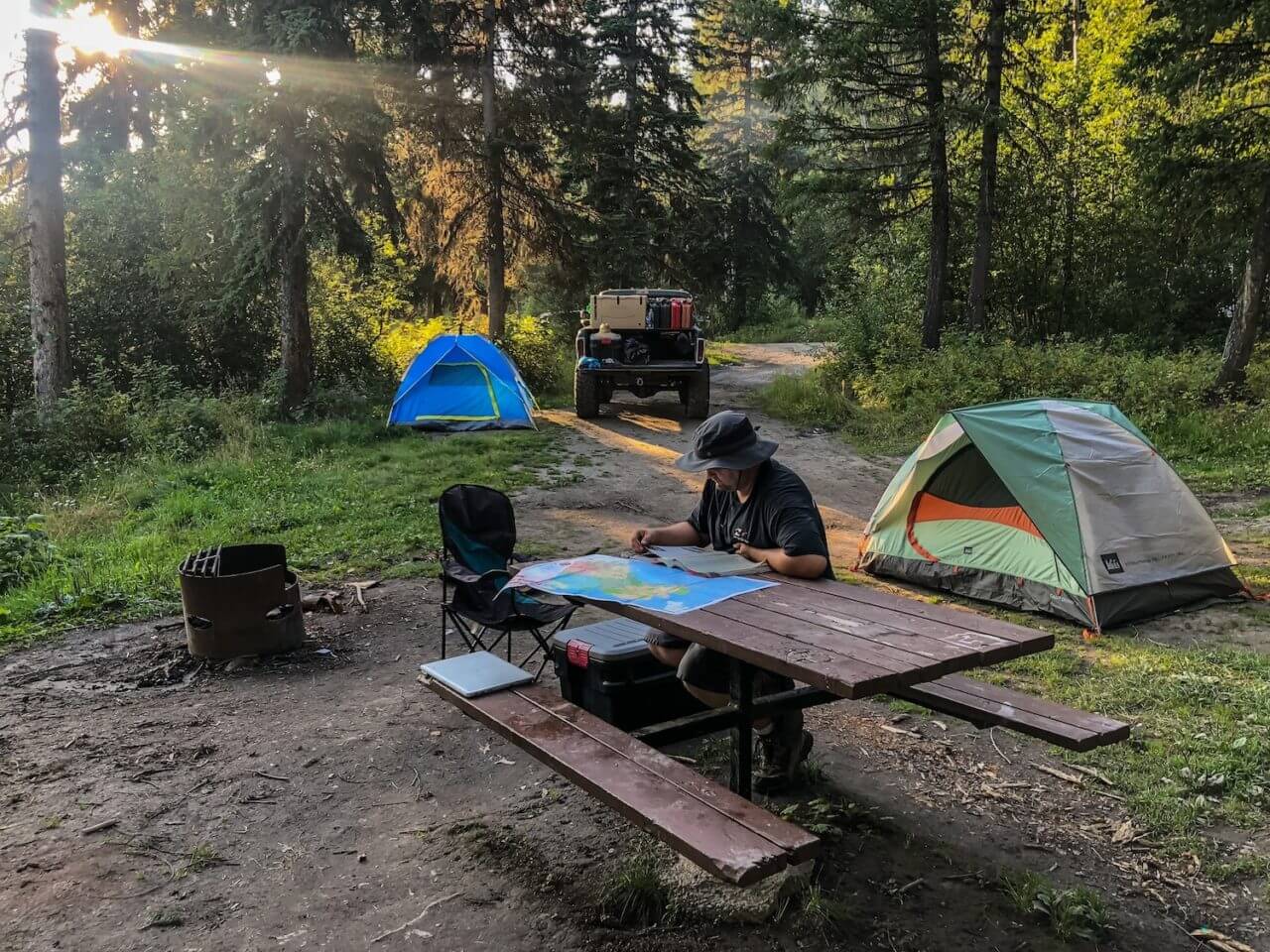
Sometimes you pick your next location in the middle of a trip, like Tarzan swinging from one vine to the next. For your first trip though we recommend having a location picked out well ahead of time. If you are camping in a state park or national park you will likely need to make reservations months ahead of time for a camp spot.
How To Pick A Location
We recommend picking a location that has piqued your interest in some way. Maybe you drove past that sign with a turn off to a lake and always wondered what it looked like. Or a friend told you about a vista where you can see for miles. Think about what appeals to you. Are you interested in history? Or geology? Fishing? Your interests should help you determine where you want to go. We generally use an atlas for the state we are traveling in to hone in on routes and where to stay once we have a destination in mind. Delorme makes atlases for every state with detailed maps showing paved roads, unpaved roads, campgrounds, and more. Where you have cell service, the atlas can be used in conjunction with online mapping applications to determine your location at intersections and other locations. While the apps alone are useful to help you determine where you are, the atlas is helpful in illustrating all of the items of interest around you that you might otherwise miss.
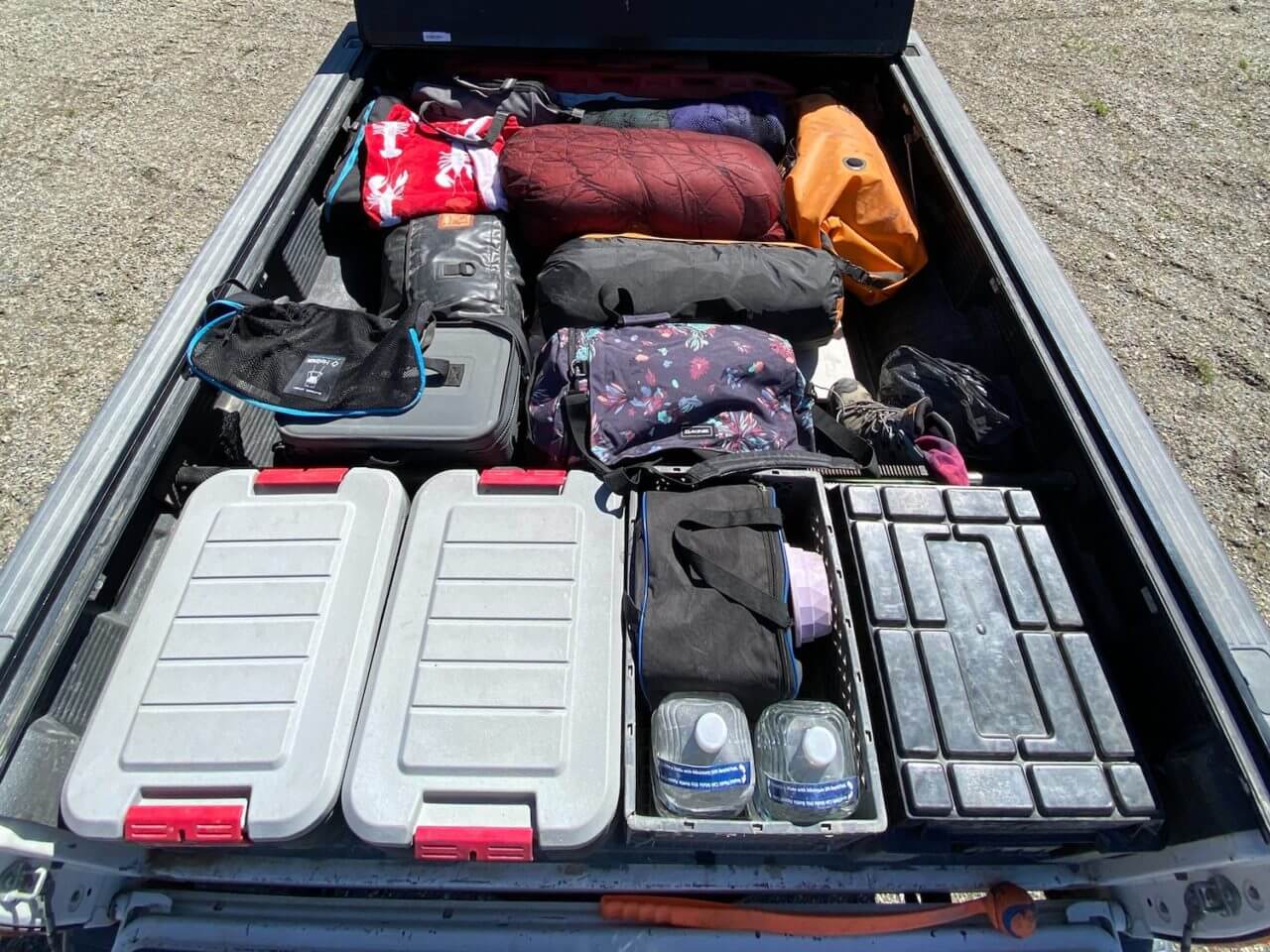
Did you remember to check the weather before you left? That will help dictate what you bring. Warm weather generally requires less gear and sandals instead of hiking boots. Cooler weather necessitates warmer clothing and sleeping bags. Remember that in the desert the temperatures often fall by 30 degrees when the sun goes down. And if rain is in the forecast you will want to bring your poncho and your Rhino Rack awning to stay dry.
What You Need To Bring
In addition to the road atlas, there are several other things you will need to bring with you on your first overlanding trip. Starting with the basics, you should have a first aid kit and fire extinguisher in your vehicle to deal with any unforeseen accidents. Clothing can be tailored to the trip based on what is in your closet. If you are planning to visit the water, remember not only your swimsuit and sandals but also towel and sunscreen as well. Speaking of water, it is arguably the most important item you will bring. Factor at least a gallon a day per person to stay hydrated.
If your destination is a campground, they will likely have pit toilets or outhouses, but if you are going to somewhere more primitive you need to be prepared when nature calls. In some areas that means digging a hole six inches and burying your waste, but in other areas with little to no soil that could mean carrying your waste and toilet paper out with you until you get home, or somewhere you can properly dispose of them. No one likes to set up camp at the perfect site only to find the “white flowers” of the last person who stayed there.
You will need a tent, sleeping pad, and sleeping bag in order to get a good night sleep. We generally prefer a warmer sleeping bag that we can zip open if we are too warm if it is in your budget, shivering all night is not a good way to start your overland camping experience. Good gear will make you more comfortable, but your budget, space, and other needs might dictate less expensive gear. Spend your money on a good sleeping pad and save money on the tent and sleeping bag, you can always wear long johns to bed to stay warm.
Foods is subjective. Some people are gourmet camp chefs. We hate doing dishes on the trail so we try to do as much food prep ahead of time as possible. Like prepared breakfast burritos in aluminum foil that you just have to heat up on the engine, lots of snacks, pre-made sandwiches for lunch, for dinners we usually have one pot meals that just have to be reheated, or dehydrated meals designed for backpacking. We also like to use frozen bottles of water in the cooler, so they don’t make a mess and you get more water as they thaw.
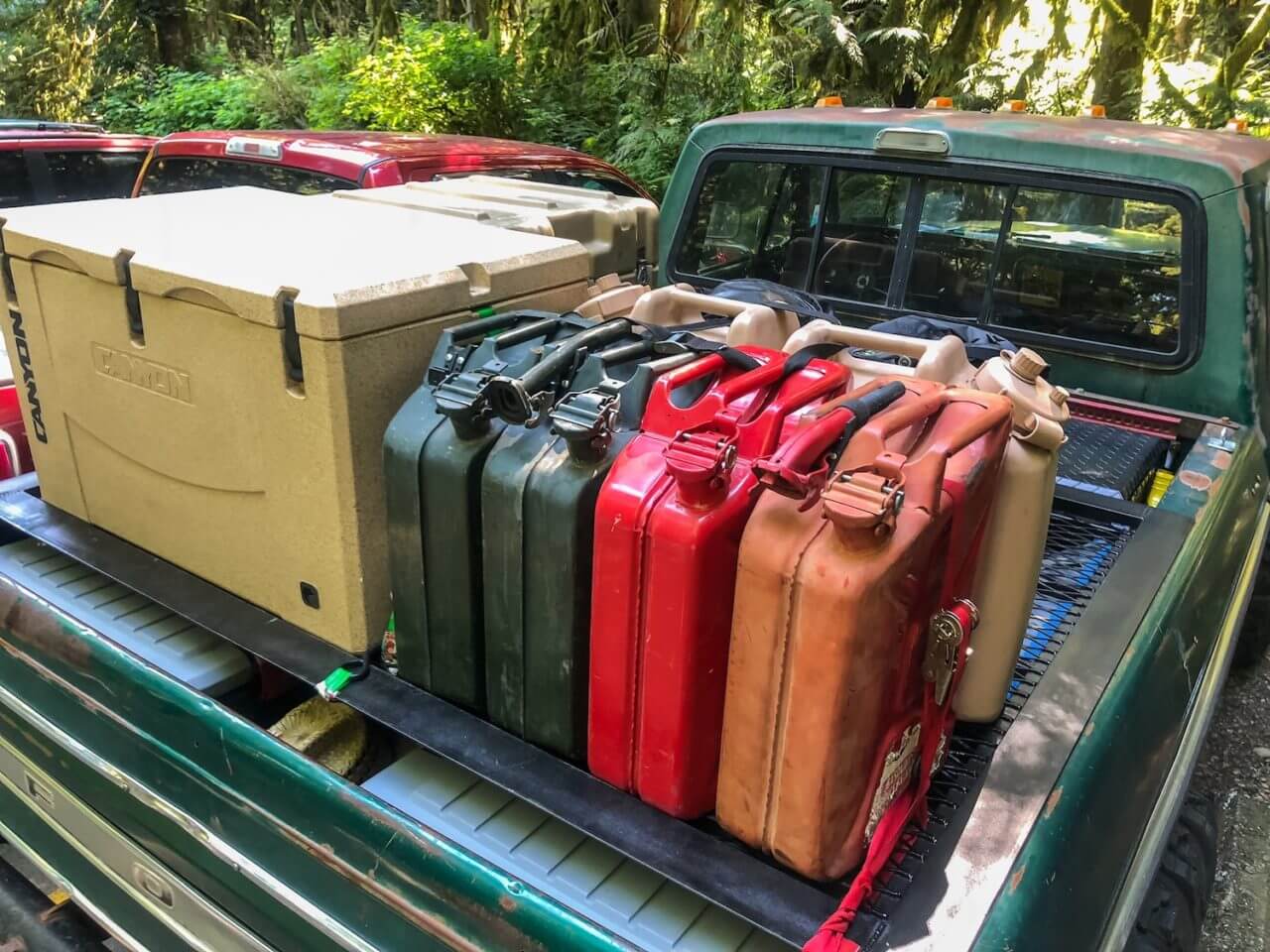
Unless you are planning to cross the Arizona Strip unsupported, you probably don’t need to bring 20 gallons worth of extra fuel. Just start with a full tank of gas and refill your tank when it gets down below half a tank and you will be fine in nearly every corner of the United States.
What You Don’t Need
You don’t need a roof top tent, and an awning, and a freezer fridge in order to do your first overlanding trip. These items will make your trip more comfortable, but they are not essential. The most important thing to bring is a sense of adventure. We recommend packing relatively light on your first trip; resist the temptation to bring a cord of firewood and a floor jack and three times as much food as you could possibly eat. The goal of leaving town is to leave some of the comforts of home behind and unplug from society. After the trip, note which items you brought but didn’t use. Some, like say a spare tire, you want to keep bringing even if you don’t use them, but others, such as that corn hole game you strapped to the roof, can likely be left at home next time. Instead, perhaps you want a more comfortable chair or a book to read in camp.
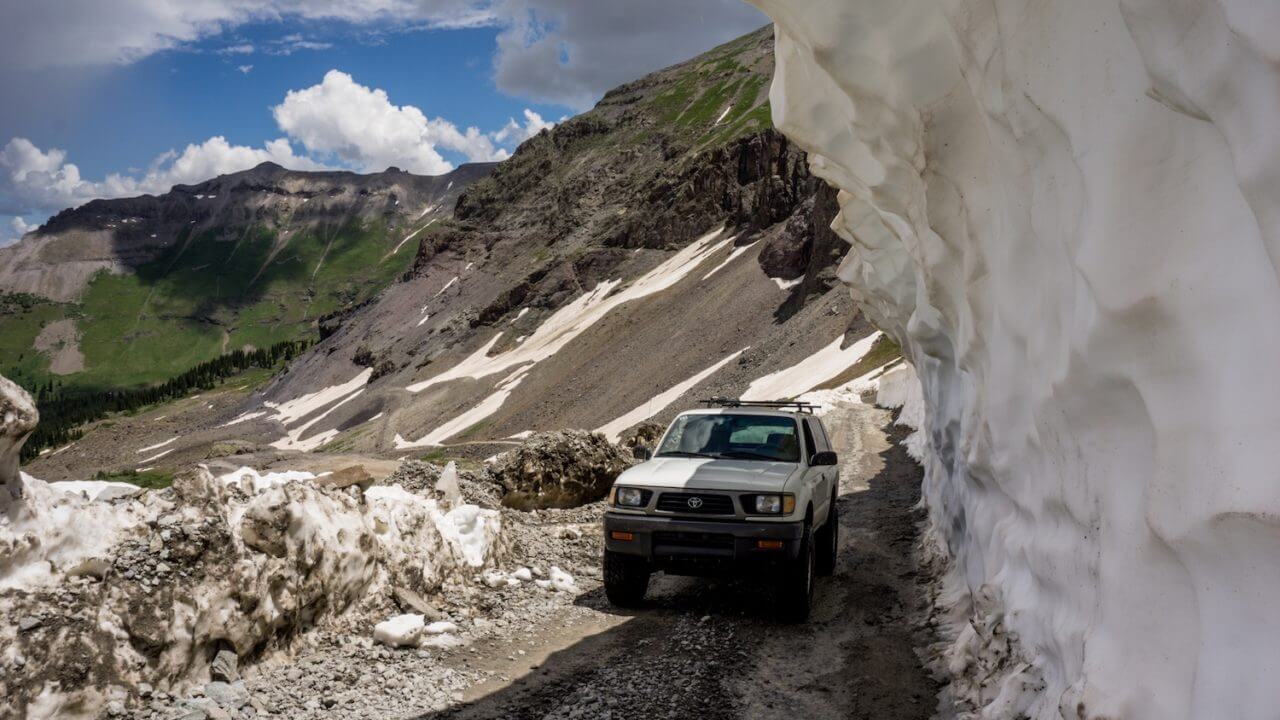
We lucked out on this trip; the road had only opened the week prior. If you find you are forced to change your plans, take it as an opportunity to learn rather than feeling defeated. As time goes on you will find the most memorable trips aren’t the ones where everything went according to plan, but when you had to use your skill set to overcome adversity.
What To Remember
The most important aspect of your trip is to have fun. If you want to sleep in, sleep in. If you want to eat junk food, eat junk food. Along the way remember to take note of what you used and needed, and what you needed but didn’t have. Each trip is an opportunity to learn and fine tune your equipment and your skill set. Long after your first trip you will find this comes in handy, and as time goes on you will be prepared for any situation that you might encounter, whether you are venturing across town or across the globe.

Cooking can be as simple or as complex when out camping as it is at home. We generally like to bring pre-made salads and cuts of meat we can cook on the grill rather than elaborate meals that require ten pots and pans and hours to make. Remember, you likely won’t have running water on the trail so it is worthwhile to keep the dishes to a minimum.









2